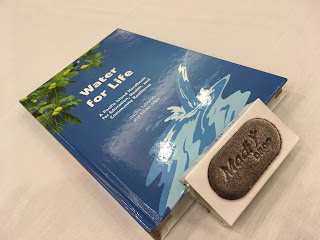If the last week of June was busy, now, with the holiday over, the We Are Still In action is heating up again.
Vizcaya Museum & Gardens signed on - a heritage site dealing with significant impacts of sea level rise on the Florida coast. They're experiences are important for us all to understand. How can we help them; how does their experience prepare others?
Then the
Museums Association of Arizona signed on as our first association signatory and first state museum association signatory. Janice Klein attended an online session, then made an excellent case to her board. They are in!
Tomorrow is another chance to
listen and ask questions. It's noon EST. Just follow that link.
There are similar
live webinars every week this summer, and we'll be archiving copies. We're trying to make it easy for you to learn, have your questions answered, and then join your peers. They're interested in working across sectors to help create solutions, and participating in or hosting environment and climate discussions not just with visitors, but also in their communities. It's not about what you're doing now, it's about what you
want to start doing.
Meanwhile, the We Are Still In Steering Committee is sending invites to our Forum on September 11th at the
Global Climate Action Summit in San Francisco, but you have to be part of We Are Still In to participate. The Field Museum and New England Aquarium committed immediately to participating. Museums, gardens, aquariums and historic sites will be able to send a valuable message during the Summit.
It's just incredible to experience. We are showing the world that the
significant abilities, resources, and influence of our sector can help address our
greatest social, scientific, and economic challenge ever: climate change. Without the volunteers of AAM's Environment & Climate Network, Stephanie, Emily, Carter, Holly, Roger, and Pat, this would not be possible.
So, will you listen in to our calls, or have a private one with me? Will you go to the website yourself?
www.wearestillin.com
Then will you sign on and help us tell the world that America is Still In the Paris Agreement because we care about our World? 'Cause we do.






